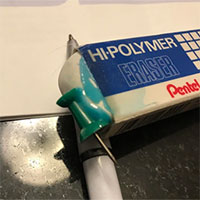The beautiful country of Bolivia is located close to the southern border of the Brazilian state of Amazonas – one of the places where the most intense forest fires occur, on their territory there is also a part of the Amazon forest; Bolivia is also one of the countries directly affected by the smoke emitted by forest fires. It is possible to imagine the level of air pollution in Bolivia, when we see that São Paulo is thousands of kilometers from the fire and the smoke is still black.
Bolivian President Evo Morales enlisted the help of one of the leading firefighting “experts” : a Boeing 747 Supertanker. It can carry 70,000 liters of water or fire retardant, the first time “in combat” was in 2009 in Spain, during a large fire in Cuenca.

At the present time, there is only one Supertanker in operation.
At the present time, there is only one Supertanker in operation. Obviously such a big character will have to appear in the fire that is most concerned at the moment. The company that manages the large firefighting aircraft, Global SuperTanker, officially sent the Boeing 747-400 to Amazon over the weekend. According to what Global SuperTanker claims, the large aircraft has successfully made three trips to carry fire water, and is preparing for the fourth.
The fire plane was born in tragedy: it was the fire season of 2002 in the US. After two other firefighting aircraft, the Lockheed C-130 Hercules and the Consolidated PB4Y-2 Privateer, crashed, killing five people, the US Department of the Interior issued a request to install a new generation of firefighting aircraft.
Evergreen International Aviation was the first to develop large fire fighters, they planned to convert four Boeing 747-200s into Supertankers, and had their first success on February 19, 2004: the Boeing 747 (number N470EV) became a Supertanker and took to the air for the first time.

Supertanker fire fighting in Israel in 2010.
But by June 2006, Evergreen had spent up to 40 million USD on this project, waiting for approval from the Federal Aviation Administration (FAA) and waiting for a fire contract from another party. It wasn’t until October 2006 that they obtained a license to “install and dismantle” the Supertankers’ flushing systems.
According to official information from Evergreen, the Supertanker is equipped with a pressurized water discharge system, which can bring fire water down at the same speed as rain water. Supertanker can fly at an altitude of only 120-240 meters, with a speed of 260 km / h to discharge fire water.
The advanced sprinkler system, combined with a huge water capacity, allows the Supertanker to continuously discharge fire water for 4.8 km, with the width of the “artificial rain” up to 46 meters.
Supertanker can fly at a maximum speed of 970 km / h, allowing it to be anywhere in the US in 2.5 hours and appear in any sky on Earth in less than 20 hours. It’s “dwelling” at Sacramento McClellan Airport, located in California.

Supertanker can fly at an altitude of only 120-240 meters, with a speed of 260 km / h to discharge fire water.
By 2013, Evergreen had financial problems, unable to continue to care for Supertanker. At the end of 2013, Evergreen officially ceased operations, they signed a new contract, allowing a third party, Jet Midwest Aviation, to dismantle the Supertanker for scrap.
But in August 2015, Global SuperTanker Services (the organization that inherits the legacy of Evergreen Supertanker Services) bought all the old equipment as well as all the intellectual property that used to be part of Evergreen’s Supertanker project (except the chassis of the 747-100).
A fire suppression system was fitted to the frame of the Boeing 747-400, making it the only working Supertanker.
The Supertanker’s long (and fraught) history cannot overshadow the firefighter’s past feats: it has appeared in Iraq, Chile, and Israel to put out the biggest fires in history. It also contributed greatly to the great fire in California last year and now, once again Supertanker helps in the Amazon forest fire.
Amidst the praise for ground fire units, look up into the air to admire the wonder of the fire industry: the Supertanker with the ability to carry 70,000 liters of water to save the green lungs of the Earth.

